A pipefitter or pipefitter installs, repairs, and maintains piping systems. They read design specifications necessary for building appropriate heating, cooling, steam generation, and industrial piping assemblies. They may also work across different environments, from industrial settings, home installations, to install pipe systems in commercial buildings.
In this article, we’ll take a deep dive into the pipefitter job description. We’ll also discuss what distinguishes pipefitters from plumbers, the job outlook, salary expectations, and much more.
Table of Contents
What’s the Difference Between Pipe Fitters and Plumbers?
-
Want to become a pipefitter? Apply today!
Loading…
/**/
Although pipefitters and plumbers both work on pipes and piping systems, there’s a significant difference in the types of systems they handle.
Plumbers install, repair, and assemble systems that fall under the public utility umbrella such as drainage, heating, and water transportation. They troubleshoot problems related to burst pipes and pipe leaks and are also capable of installing system-dependent appliances, including water heaters, dishwashers, garbage disposals, and hot water tanks.
They can also design systems for handling condensation, gasses, steam, drain lines, lubrication, heating, refrigeration, and other actions. They may also set up automated controls for these procedures and work in commercial and residential settings, similar to plumbers.
Difference in Skills
Since plumbers manage water-based installation and repair, they typically work on copper and PVC pipes. Alternatively, pipefitters may work on chemical transport piping, high-pressure units, and air conditioning systems. That’s why a pipefitter must have adequate knowledge of welding equipment, metallurgy, and power tools.
Difference in Workplace
Plumbers generally work in residential and commercial settings such as homes, offices, and apartments. They help install water supply, sink, kitchen, and machinery that run on water, such as refrigerators and washing machines.
Meanwhile, pipefitters play a crucial role in oil, construction, manufacturing, and energy generation. They lay the high-pressure and low-pressure pipe systems, install supporting structural steel members, and perform routine inspection and maintenance.
START YOUR PLUMBING & HEATING CAREER
Earn your degree in Plumbing & Heating from NEIT and begin your new career path today!
ASSOCIATE'S DEGREE
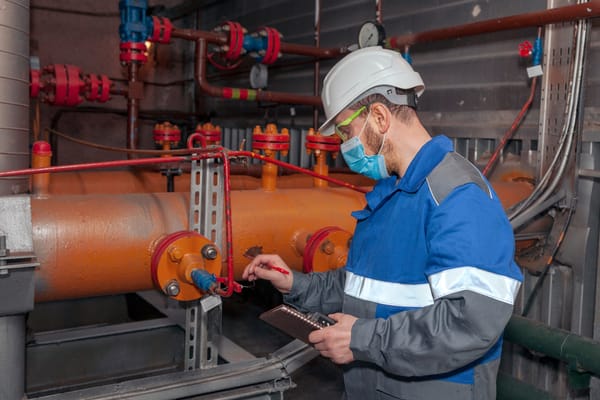
Pipe Fitter: Job Description and Responsibilities
A pipefitter may work on the pipe systems and supports for the following applications:
- Oil and Gas production
- Hydraulic and Pneumatics
- Hot water supply
- Heating and cooling systems
- Lubrication supply
- Industrial processing units
- Manufacturing facility
Typical responsibilities of a pipefitter include:
- Reading and reviewing blueprints
- Applying knowledge of system operation to select the most suitable pipe type and size
- According to specifications, install support equipment like hangers, brackets, pneumatic equipment, and hydraulic cylinders
- Inspect the worksite to ensure no obstructions to the pipe and if there are any holes or interference, repair or modify the design
- Cutting pipes using handheld and power tools like hammer and chisel, cutting torch, pipe cutter, and pipe cutting machine
- Threading and bending pipes using pipe bending tools and threading machines
- Assembling and installing tubes, fittings, and non-metallic attachments.
- Joining pipes using threads, soldering, brazing, or cemented connections
- Inspecting piping systems and machinery to detect machinery malfunctions
- Creating protective pipe layers using paints and other mechanisms
- Operating material movement machinery to lift pipes, support equipment, and heavy machinery
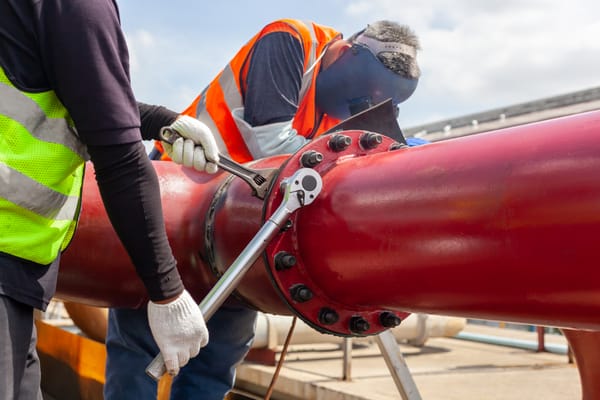
What’s a Typical Job Description Like?
If you’re applying for a job as a pipefitter, the listings you encounter will likely contain the following information:
We’re looking for a skilled pipefitter to join immediately at our in-plant location. An ideal candidate must know blueprint reading, understand design and installation specifications, and lay appropriate pipe systems in a lube refinery. Prior experience in power plants and refineries would be an added advantage.
Job Type: Full-time
Worksite: Requires travel to various sites
Pay: $22/hour + paid training + benefits
Duties and Responsibilities: Working at airports, manufacturing plants, and service stations. You’ll be using pipe threading equipment, concrete tools, welding sticks, jackhammer, acetylene torch, and small hand tools to install and maintain high-pressure chemical supply pipelines.
Skills: Welding (MIG, TIG, Arc, etc.). Drawing interpretation. Basic knowledge of fabrications and system schematics. Communication. Ability to work as a team player.
Education Requirements: High School Diploma/GED/Apprenticeship program. Class D-driving license (auto, light truck, moped)
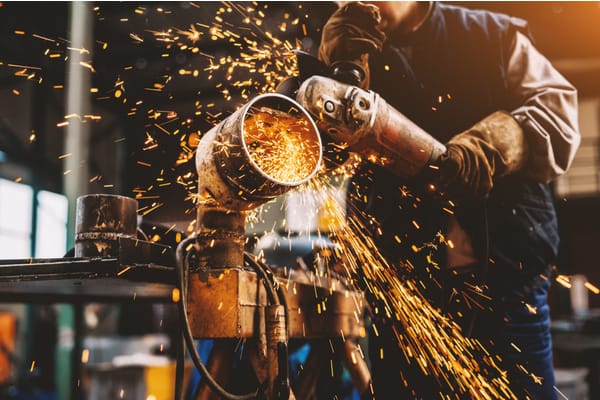
Required Skills and Qualifications
If you’re looking to join an expanding industry and favor the idea of working in an hands-on environment, then becoming a pipefitter may be a great career choice. If you think you would do better in plumbing, be sure to read our guide on how to become a plumber.
Now, let’s take a closer look at what it takes to excel as a pipefitter.
Qualifications
That said, a certificate program or an associate’s degree will significantly increase your chances of earning a higher wage.
Related: Everything you need to know about Plumbing Trade Schools.
Skills
Some of the typical requirements for pipefitters include:
- Technical proficiency
- Ability to read and interpret visual data
- Problem-solving skills
- Strong communication skills
- Physical strength
- Knowledge of health and safety guidelines
Job Outlook and Salaries
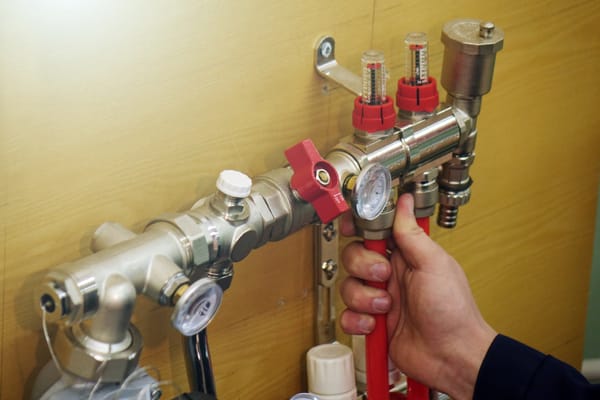
The mean annual wages for plumbers and pipefitters in the United States is $61,100 per year, while the top ten percent of earners pocket upwards of $98,990 annually. Depending on your qualifications, work experience, certification, and job location, you can expect even higher salaries
Top-Paying States and Cities
According to BLS, the mean annual wages in Rhode Island is $60,520. Comparatively, Alaska offers the highest mean salaries to plumbers and pipefitters at $88,150 per year. The top five states for mean annual wage are:
- Alaska: $88,150
- Illinois: $87,880
- Massachusetts: $80,860
- Minnesota: $76,080
- New Jersey: $75,840
Similarly, the top five cities with the highest average salaries are:
- San Francisco-Oakland-Hayward, California: $106,100
- Fairbanks, Alaska: $94,280
- Kankakee, Illinois: $93,420
- Chicago-Naperville-Elgin, Illinois-Indiana-Wisconsin: $91,940
- Pittsfield, Massachusetts: $90,980
Best Companies to Work for
According to Zippia.com, the following companies offer excellent salaries, benefits, and work culture:
- 3M
- Southern
- Merck
- EMCOR Group
- Kiewit
- Laboratory Corporations of America Holdings
- Covance
- SpaceX
- MasTec
- GNC
Best-Paying Jobs
Common Interview Questions
Once you complete your education and training as a pipefitter, you should start preparing for job interviews. These are some of the typical interview questions that employers might ask pipefitters:
- Can you explain the various methods for testing and inspection of pipe systems?
- How do you select an appropriate pipe material?
- What are the steps required in planning a piping installation?
- What are the safety hazards that may arise during repair and installation?
- What are the functions of pneumatic and hydraulic controls in piping?
- How will you handle deviations during the installation?
- What was your role in your previous job/training, and what did you learn from it?
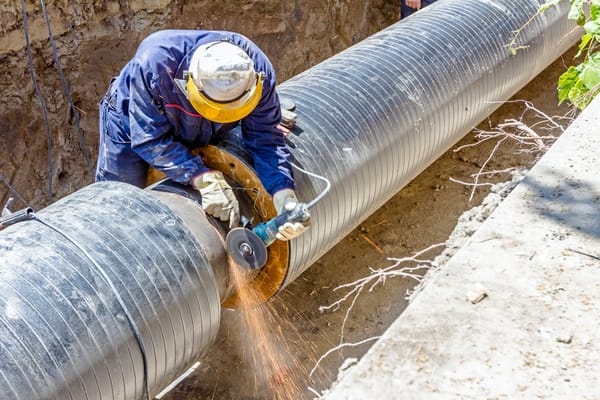
Conclusion
Pipefitters work on industrial piping systems in a hands-on, practical-intensive environment. The right education, training, and experience can help you earn a competitive salary and quickly advance to leadership roles.
The New England Institute of Technology offers a comprehensive Associate of Science in Plumbing and Heating. Students will walk away from the program with extensive knowledge in plumbing, heating, pipefitting, or steamfitting.
An associate’s level education also arms graduates with the communication and critical thinking skills needed to help them stand out from the competition. This will give individuals a leg up when it comes to negotiating salary and landing higher-level positions.
START YOUR PLUMBING & HEATING CAREER
Earn your degree in Plumbing & Heating from NEIT and begin your new career path today!
ASSOCIATE'S DEGREE
FAQs
What Responsibilities Do Pipefitters Have?
A pipefitter is responsible for installing, repairing, and maintaining piping systems for heating and cooling, high-pressure transport, oil and chemicals, natural gas, and more. They read design specifications to cut and weld pipes, perform routine inspections, and lay pipework.
What Tools Does a Pipefitter Use?
Pipefitters use acetylene torches, grinders, welding equipment, pipe bending & threading tools, and pipe cutting machines. They also require hand tools such as a hammer, chisel, and wrench for carrying out their work.
What Settings Do Pipefitters Typically Work In?
Pipefitters work in refineries, natural gas distribution, construction, and manufacturing industries. Heavy industries, plumbing, heating, and air conditioning contractors also employ pipefitters.

